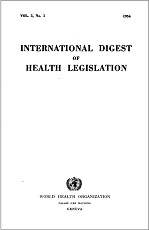Rebecca J Cook, Bernard M Dickens

Extract
Conclusion
The objective of this Report has been to present a synthesis of Commonwealth abortion laws, and a synopsis of their lines of development. . .
The Report identifies factors that those planning change may need to consider, indicates how individual jurisdictions have responded to particular issues, and shows how certain laws have been found to operate.
. . .The ordering of national priorities is a function of government, which best discharges its duties by being sensitive to the spiritual and pragmatic aspirations of those it serves by leading. . .
Cook RJ, Dickens BM. Abortion laws in Commonwealth countries. Int Dig Health Leg. 1979;30(395-502.
